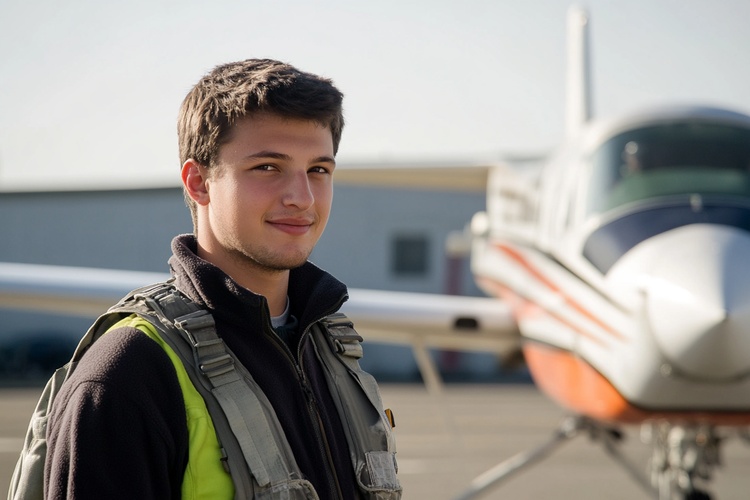Taking Flight: Navigating the World of Aviation Safety and Mechanic Training
The aviation industry is a complex and highly regulated field requiring skilled professionals trained to maintain and ensure the safety and efficiency of aircraft. With a rising global demand for aviation services, there is also an increased need for well-trained aviation mechanics and safety specialists. This article will delve into the world of aviation safety and mechanic training, exploring costs, locations, and the best training companies in your region.

What are the essential components of aviation safety training?
Aviation safety training is a comprehensive process that covers various aspects of aircraft operation and maintenance. The core components include understanding aviation regulations, risk management, emergency procedures, and human factors in aviation. Trainees learn about aircraft systems, weather patterns, and communication protocols. Additionally, they study incident reporting, safety management systems, and the latest technological advancements in aviation safety.
Flying safe is the essential guide for all aviation professionals. This training ensures that pilots, mechanics, and ground crew members are equipped with the knowledge and skills necessary to prevent accidents and respond effectively to emergencies. It also covers the psychological aspects of aviation safety, such as decision-making under pressure and crew resource management.
How do skilled mechanics keep planes soaring?
Skilled mechanics are the unsung heroes of the aviation industry, playing a crucial role in keeping aircraft airworthy and passengers safe. Their training encompasses a wide range of technical skills, including airframe maintenance, engine repair, avionics troubleshooting, and systems integration. These professionals learn to diagnose complex issues, perform intricate repairs, and conduct thorough inspections to ensure every component of an aircraft is functioning optimally.
Mechanics undergo rigorous training to understand the latest aircraft technologies, from traditional mechanical systems to advanced computer-controlled avionics. They learn to work with various materials, including metals, composites, and electronic components. The ability to interpret technical manuals, follow strict maintenance procedures, and adhere to safety regulations is paramount in their training.
What are the typical training costs for aviation professionals?
Training costs for aviation pros can vary significantly depending on the specific program, location, and duration. For aspiring pilots, the cost of obtaining a commercial pilot’s license can range from $50,000 to $100,000 or more. This includes flight time, ground school, and various certifications. Aviation mechanic training programs at technical schools or community colleges may cost between $20,000 and $50,000 for a two-year program.
For those seeking advanced certifications or specialized training in aviation safety, costs can add up quickly. Short-term courses in specific areas of aviation safety might range from $1,000 to $5,000, while comprehensive safety management programs could cost $10,000 or more.
| Training Type | Duration | Estimated Cost Range |
|---|---|---|
| Commercial Pilot License | 1-2 years | $50,000 - $100,000+ |
| Aviation Mechanic Program | 2 years | $20,000 - $50,000 |
| Aviation Safety Short Course | 1-2 weeks | $1,000 - $5,000 |
| Comprehensive Safety Management Program | 3-6 months | $10,000 - $25,000 |
Prices, rates, or cost estimates mentioned in this article are based on the latest available information but may change over time. Independent research is advised before making financial decisions.
How can you find your city’s top aviation schools?
Finding the best aviation schools in your area requires thorough research and consideration of several factors. Start by searching online for “aviation schools near me” or “flight training in [your city].” Look for schools that are FAA-approved and have a good reputation in the industry. Check their accreditation status, graduation rates, and job placement statistics.
Visit the schools in person if possible, and talk to current students and instructors. Ask about their training aircraft, simulators, and facilities. Consider the school’s partnerships with airlines or maintenance companies, as these can provide valuable networking opportunities. Don’t forget to inquire about financial aid options and flexible scheduling if needed.
What unique insights can enhance your aviation training experience?
In the United States, the aviation industry is constantly evolving, with new technologies and regulations shaping the landscape. One unique aspect of aviation training in the U.S. is the emphasis on scenario-based training, which simulates real-world situations to better prepare students for actual flight conditions. This approach has been shown to improve decision-making skills and overall safety awareness.
Another interesting trend is the integration of virtual reality (VR) and augmented reality (AR) technologies in aviation training. These tools allow students to practice procedures and experience various flight conditions in a safe, controlled environment. Some schools are also incorporating drone technology into their curriculum, recognizing the growing importance of unmanned aerial systems in the aviation industry.
How are aviation safety protocols evolving?
Navigating aviation safety protocols is an ongoing process as the industry adapts to new challenges and technologies. Recent developments include the implementation of Safety Management Systems (SMS) across all sectors of aviation. These comprehensive, data-driven approaches to safety management are becoming standard practice in the industry.
The FAA and other regulatory bodies are also focusing on addressing human factors in aviation safety, recognizing that many incidents are caused by human error rather than mechanical failure. This has led to increased emphasis on crew resource management training and the development of fatigue risk management systems.
| Safety Protocol | Description | Implementation Status |
|---|---|---|
| Safety Management Systems (SMS) | Comprehensive, data-driven safety approach | Mandatory for most commercial operators |
| Crew Resource Management (CRM) | Training focused on teamwork and communication | Widely implemented across the industry |
| Fatigue Risk Management Systems | Strategies to mitigate risks associated with crew fatigue | Increasingly adopted by airlines and operators |
| Advanced Qualification Program (AQP) | Tailored training program for airline crews | Optional but growing in popularity |
| Data-driven safety analysis | Use of big data and AI for predictive safety measures | Emerging technology, adoption increasing |
The aviation industry’s commitment to safety and continuous improvement ensures that training programs and safety protocols are always evolving. As technology advances and our understanding of human factors in aviation deepens, the field of aviation safety and mechanic training will continue to adapt, providing ever-higher levels of safety and efficiency in air travel.




